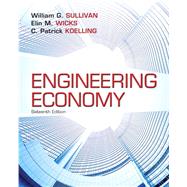ALERT: Before you purchase, check with your instructor or review your course syllabus to ensure that you select the correct ISBN. Several versions of Pearson's MyLab & Mastering products exist for each title, including customized versions for individual schools, and registrations are not transferable. In addition, you may need a CourseID, provided by your instructor, to register for and use Pearson's MyLab & Mastering products.
Packages
Access codes for Pearson's MyLab & Mastering products may not be included when purchasing or renting from companies other than Pearson; check with the seller before completing your purchase.
Used or rental books
If you rent or purchase a used book with an access code, the access code may have been redeemed previously and you may have to purchase a new access code.
Access codes
Access codes that are purchased from sellers other than Pearson carry a higher risk of being either the wrong ISBN or a previously redeemed code. Check with the seller prior to purchase.
--
Engineering Economy is intended to serve as a text for classroom instruction in undergraduate, introductory courses in Engineering Economics. It also serves as a basic reference for use by practicing engineers in all specialty areas(e.g., chemical, civil, computer, electrical, industrial, and mechanical engineering). The book is also useful to persons engaged in the management of technical activities.
Used by engineering students worldwide, this best-selling text provides a sound understanding of the principles, basic concepts, and methodology of engineering economy. Built upon the rich and time-tested teaching materials of earlier editions, it is extensively revised and updated to reflect current trends and issues, with an emphasis on the economics of engineering design throughout. It provides one of the most complete and up-to-date studies of this vitally important field.
MyEngineeringLab for Engineering Economy is a total learning package that is designed to improve results through personalized learning. MyEngineeringLab is an online homework, tutorial, and assessment program that truly engages students in learning. It helps students better prepare for class, quizzes, and exams–resulting in better performance in the course–and provides educators a dynamic set of tools for gauging individual and class progress.
Teaching and Learning Experience
This program will provide a better teaching and learning experience–for you and your students. It will help:
- Personalize Learning: MyEngineeringLab provides students with a personalized interactive learning environment, where they can learn at their own pace and measure their progress.
- Provide a Solid Foundation in the Principles, Concepts, and Methodology of Engineering Economy: Students will learn to understand and apply economic principles to engineering.
- Prepare Students for Professional Practice: Students will develop proficiency with the process for making rational decisions that they are likely to encounter in professional practice.
- Support Learning: The TestGen testbank allows instructors to regenerate algorithmically-generated variables within each problem to offer students a virtually unlimited number of paper or online assessments.
Note: MyEngineeringLab is not a self-paced technology and should only be purchased when required by an instructor.
0133750213 / 9780133750218 Engineering Economy Plus NEW MyEngineeringLab with Pearson eText -- Access Card Package
Package consists of
0133439275 / 9780133439274 Engineering Economy
0133455343 / 9780133455342 NEW MyEngineeringLab with Pearson eText -- Access Card -- Engineering Economy








